Abstract 5/2022
Table of content
Vitalii Naumov, Andrzej Szarata, Hanna Vasiutina – National model of the road cargo transport based on the TD-E survey results
Krystian Birr – Methodology of Big Data acquisition from mobile telephony and possibilities of their use in travel modelling
Konrad Biszko, Jacek Oskarbski – Emissions modelling using microscopic traffic simulation
Robert Kruk, Przemysław Brona – Value-added sectors of the economy as determinants of changes in the transport of particular groups of cargo
Abstracts
Vitalii Naumov, Andrzej Szarata, Hanna Vasiutina
National model of the road cargo transport based on the TD-E survey results
Abstract: Simulation models of transport systems are a key tool for addressing many issues in the field of management of these systems. The methodologies for creating such models use data sets on both transport infrastructure and demand for the freights or passenger transport, however, many factors are considered based on assumptions due to the complexity. This article describes the approach to modeling the cargo transportation system for road transport in Poland based on data obtained by the Central Statistical Office from the TD-E survey. This approach avoids many assumptions about the demand as the demand parameters are estimated based on a sample representing the general population – a set of all economic entities generating freight traffic. Basic procedures in the developed approach have been implemented as Python scripts. As a result of the use of the proposed methodology, a country-wide road transport model was obtained based on the TD-E survey from 2018. The adequacy of the developed model was assessed based on the results of the General Traffic Survey from 2015. The obtained model is of satisfactory quality (the coefficient of determination equals 0.62), which can be improved after calibrating the space resistance functions and improving the traffic distribution procedure.
Key words: road freight transport, traffic studies, simulation model.
Krystian Birr
Methodology of Big Data acquisition from mobile telephony and possibilities of their use in travel modelling
Abstract: The objective of this article is to present examples of possible data sources of great volume (Big Data) with particular emphasis on methods of obtaining data from mobile networks (SIM cards) and potential for its application in travel modelling on a macroscopic level. Based on experience gained during purchasing Big Data from several providers for regional government units in the Pomeranian voivodeship, the most essential methodical issues of data collecting and verification about population location and trips were described.
Key words: road transport, Big Data, travel modelling.
Konrad Biszko, Jacek Oskarbski
Emissions modelling using microscopic traffic simulation
Abstract: The article deals with issues related to modeling of exhaust emissions using microscopic traffic simulations. The aim of the study was to develop a traffic model that can be used to calculate vehicle emissions taking into account the type of intersection and traffic volumes. The article focuses on fuel consumption and carbon dioxide emission values. The literature was analyzed for factors affecting emissions that depend on human, vehicle, and infrastructure. Mathematical models were reviewed to calculate instantaneous values, often related to fuel consumption, which form the basis for estimating emissions. The selected model was implemented in a microsimulation software module to analyze emissions as a function of traffic volume at a roundabout intersection and a priority intersection. The results are presented for variants of network models that include only the approach and crossing of the intersection and those that independently account for vehicle acceleration beyond the intersection. The final part of the article discusses the selected assumptions that can be taken into account in the analyses and have an impact on the results obtained. It also discusses the issues of model accuracy and proposes solutions that enable an increase in the level of detail of obtained results.
Key words: traffic modelling, exhaust emission modelling, CO2 emissions.
Robert Kruk, Przemysław Brona
Value-added sectors of the economy as determinants of changes in the transport of particular groups of cargo
Abstract: The article presents a methodology for forecasting railway and road transport of goods based on macroeconomic factors which are the values added of specific sectors of the economy. The amounts of values added determine the role of a particular sector of the economy in creating GDP. In the case of sectors considered to be transport-intensive, they may also specify the demand for transport of particular groups of goods. It is possible to forecast the annual freight transport in the considered time period based on the estimated rates of changes in transport depending on the estimated changes in the values added of individual transport modes defined as transport-intensive. Changes in the land transport are specified separately for defined groups of goods depending on the economic sectors to which they are assigned. Railway transport of goods in a specific year in each specific groups of goods is defined as the share of railway transport in freight land transport. Railway transport share indexes are also a function of changes in the amount of value added by each sector of the economy. The paper also presents a methodology for defining flexibility function for both changes in transport in specific groups of goods as well as the share of railway transport in the land freight transport. The methodology can be used in developing forecasts for transportation infrastructure feasibility studies documentation.
Key words: transport, railway transport, transport of goods, transport forecasts.

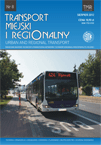 SITK RP
SITK RP 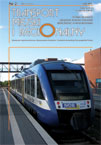 SITK RP
SITK RP 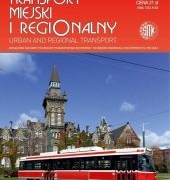 SITK RP
SITK RP 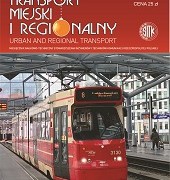
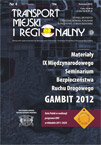 SITK RP
SITK RP 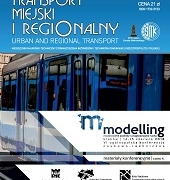

 SITK
SITK Wydawnictwa SITK RP
Wydawnictwa SITK RP